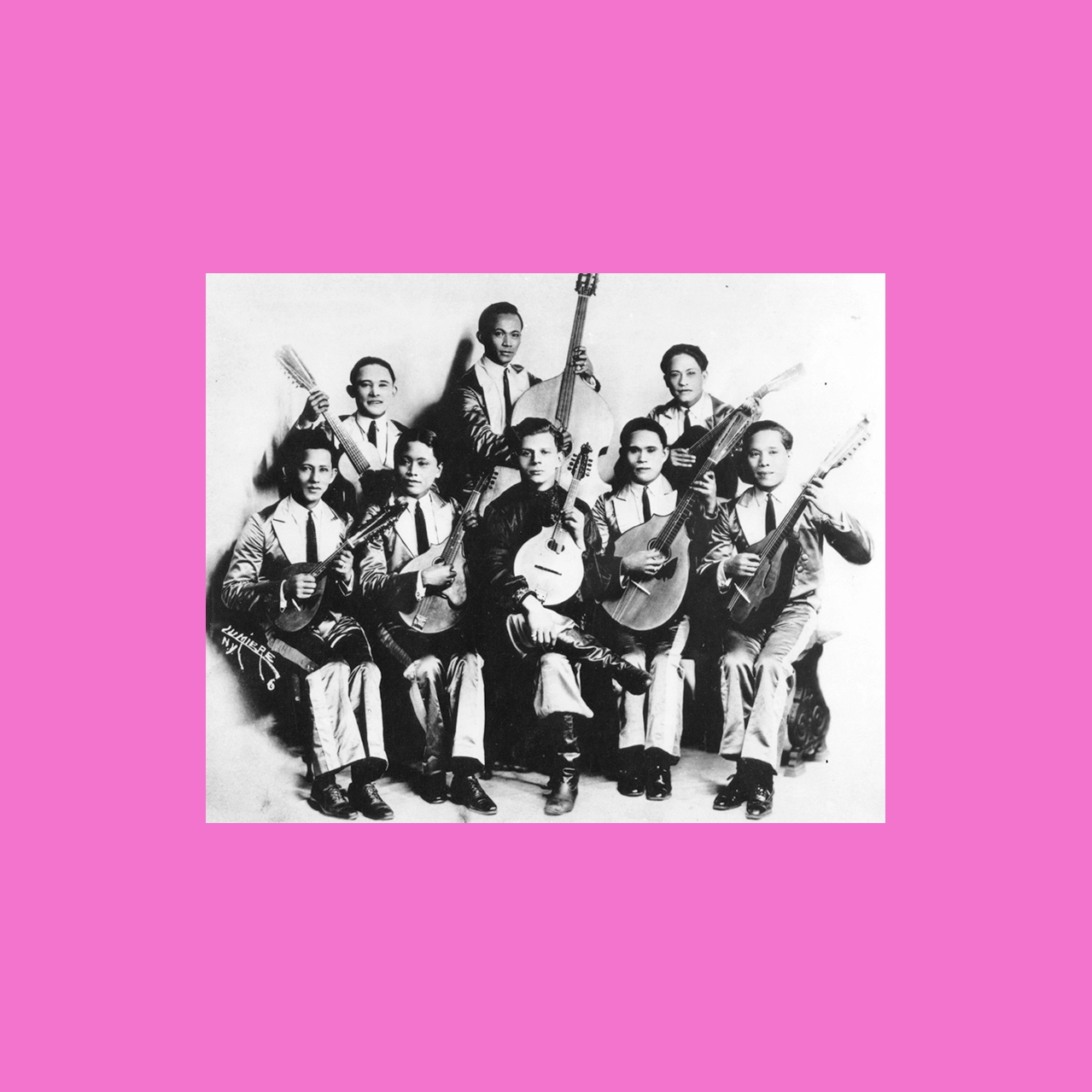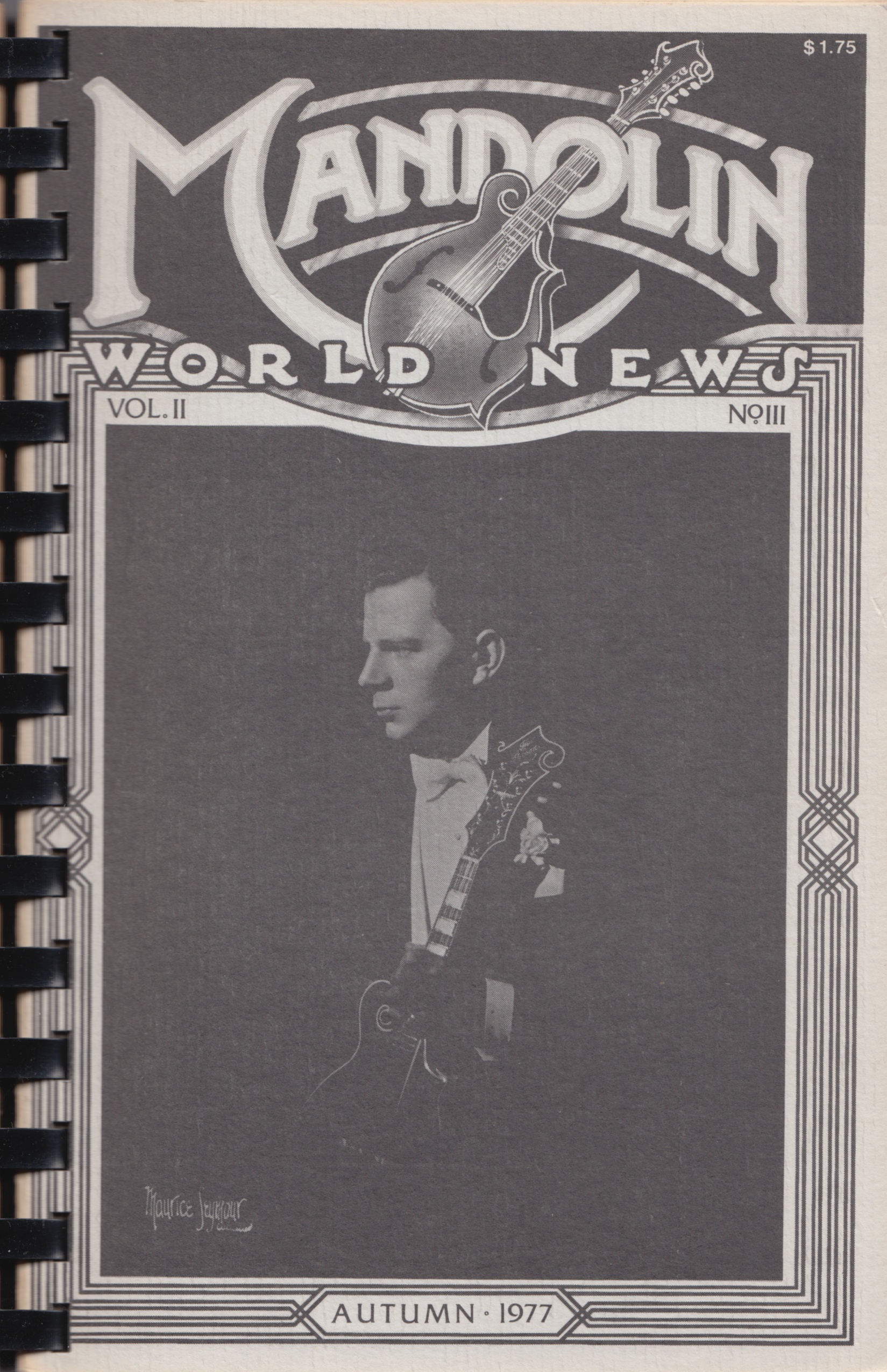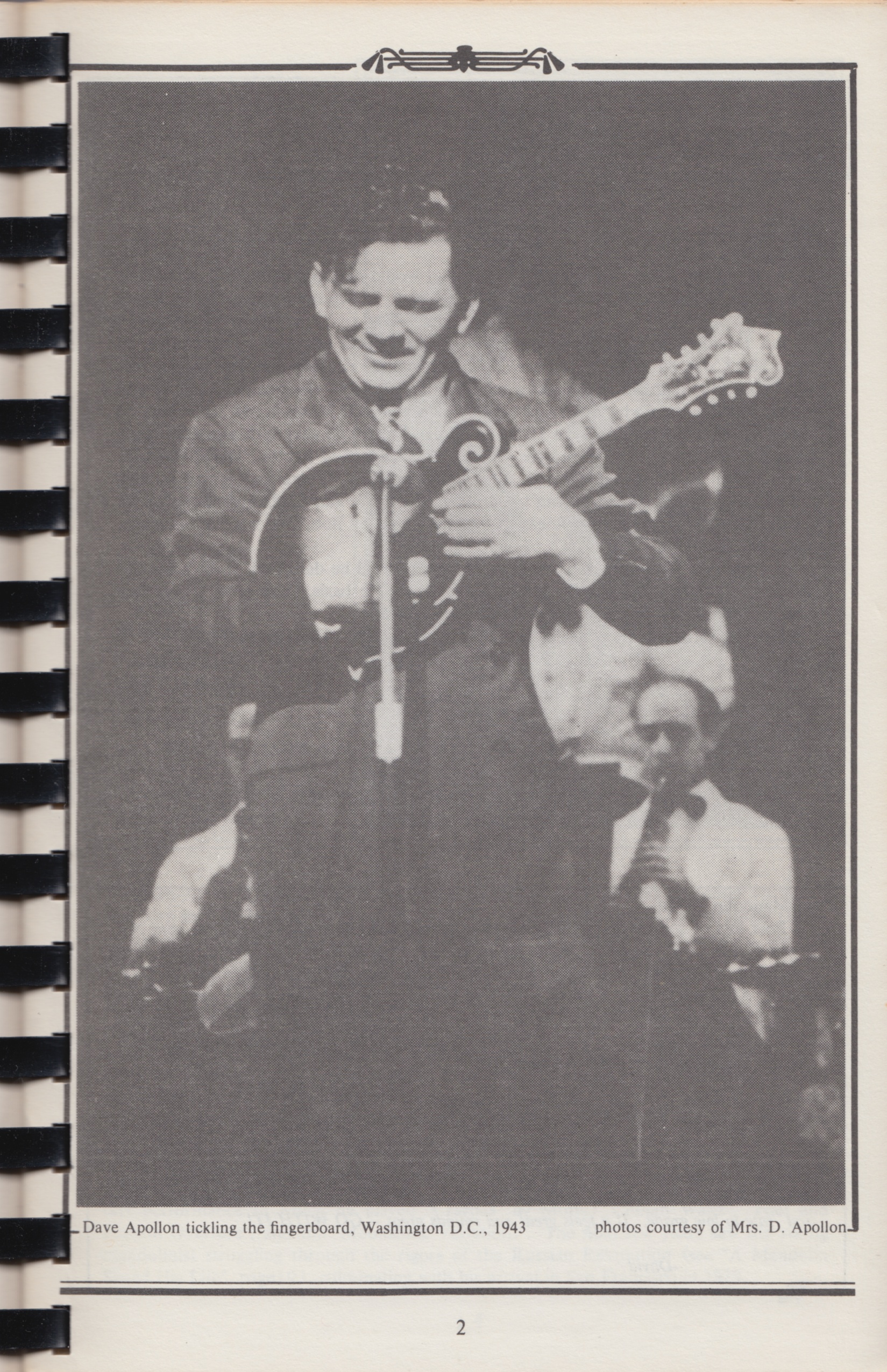
Ich habe viele Zeitungsausschnitte über Dave Apollon gesammelt - diese findet man über die folgenden Buttons (mandoisland.de):
Musikalischer Stil
Klassik, populäre Musik, Jazz
Land
USA, stammt aus der Ukraine
Instrument
Gibson F5 Mandoline
Dave Apollon- Mandoline World News Cover 1977

Biography
https://acousticdisc.com/dave-apollon/
Born on February 23, 1897 in Kiev, Russia, Dave Apollon was a master musician and showman, billed throughout his career as “The World’s Greatest Mandolin Virtuoso.” Dave displayed a great natural talent for dancing and music at an early age. Following a disastrous encounter with an irate violin teacher, the young prodigy began to teach himself to play a bowl-back mandolin his father had given him.
At age 14, he was playing well enough to organize his own ensemble to entertain in a Kiev movie theater. At the height of World War I, he served in the Russian Revolution, using his mandolin as his most effective weapon in wartime. Afterwards he left Russia and sailed to the Philippines, where he continued to work playing and dancing. From there he traveled to Japan and then secured a visa to enter the United States.
Arriving in San Francisco in 1919, he headed straight for New York City, where he was bent on a career in show business. He was immediately hired at the Palace Theater, accompanied by the Ford Sisters dancing act. He played “Gypsy Aires” by Sarasate on his mandolin and brought the house down! He signed a three year contract and began a career in vaudeville which would span nearly 20 years.
On June 8, 1932 Dave made his first recordings for the “Brunswick” label in New York City. Accompaniment was provided by Philippine string musicians whom he had discovered. These records display a unique blend of Latin, Russian gypsy and American ragtime. Apollon then embarked on a career in motion pictures. In 1929, he filmed his first of seven musical shorts. And, for the next 10 years he continued to make “soundies” based on his vaudeville routines.
In 1937, Dave married Danzi Goodell, formerly an “eccentric” dancer in his revue. Settling in New York, they socialized with the Gershwins, Akim Tamiroff, Ethel Mermen, and other elite members of show business society. He even opened the “Club Casanova” on Manhattan’s fashionable Upper East Side.
Biography
https://acousticdisc.com/dave-apollon/
Although Apollon made no commercial recordings during this period, he would occasionally cut tunes to acetate discs. His two takes of “Who” may well be considered the earliest recordings of jazz mandolin. “Spanish Fantasy,” an original composition played on two different mandolins, remains Daveís only documented solo. He also appeared in the full-length American feature, Universal’s “Merry Go-Round” in 1938.
The forties found Dave working in a greater variety of settings and contexts. He gave up his nightclub and began working on Broadway in “Boys and Girls Together” with comedian Ed Wynn. In 1941, he recorded eight sides for Decca, tastefully and sparingly accompanied by piano and guitar. These performances of popular and gypsy standards document his crystalline playing at its peak.
In 1946, he met and played with legendary gypsy musician Django Reinhardt. Apollon considered Django the greatest guitarist he had ever heard, and their unique duet took place at an uptown Manhattan nightclub during Djangoís tour of the U.S. with Duke Ellington’s Orchestra. After opening the swank “Cotillion Room” of New York Cityís Hotel Pierre in 1947, he recorded his most popular vaudeville number, “St. Louis Blues” with Laverne Gustafson.
As the fifties approached, Apollon’s act declined in popularity, although he frequently made radio and TV appearances as a soloist. With job opportunities more plentiful on the West Coast, Dave packed up his family, which now included sons Mike and Leo, and moved to Hollywood where he found a nucleus of musicians to perform with, including Jimmie Haskell, who went on to become one of Hollywood’s leading arrangers and orchestrators. In 1956, Apollon produced his first long-playing album “Lots of Love,” on his own label, Romance Records. The album was a success in Las Vegas, where it garnered lots of radio play.
An invitation to play at Las Vegas’ Desert Inn led to year-round employment there and lasted until 1963. He recorded three albums for the “Coral” label in the early sixties. After leaving the Desert Inn, failing health kept him from performing, and he never recorded again. Dave Apollon died peacefully in his home in Las Vegas in 1972.
When David Grisman met Jethro Burns and asked him who was the greatest mandolin player he ever heard, Jethro answered without hesitation, “Dave Apollon.”
Dave Apollon- Mandoline World News 1977

Biography
https://acousticdisc.com/dave-apollon/
Der am 23. Februar 1897 in Kiew, Russland, geborene Dave Apollon war ein Meistermusiker und Showman, der während seiner gesamten Karriere als "The World's Greatest Mandolin Virtuoso" bezeichnet wurde. Dave Apollon zeigte schon in jungen Jahren ein großes Naturtalent für Tanz und Musik. Nach einer verhängnisvollen Begegnung mit einem wütenden Geigenlehrer begann das junge Wunderkind, sich selbst das Spielen einer Schalenmandoline beizubringen, die ihm sein Vater geschenkt hatte.
Im Alter von 14 Jahren spielte er so gut, dass er sein eigenes Ensemble gründete, um in einem Kiewer Kino aufzutreten. Auf dem Höhepunkt des Ersten Weltkriegs diente er in der Russischen Revolution und nutzte seine Mandoline als seine wirksamste Waffe im Krieg. Danach verließ er Russland und segelte auf die Philippinen, wo er weiter als Musiker und Tänzer arbeitete. Von dort aus reiste er nach Japan und erhielt dann ein Visum für die Einreise in die Vereinigten Staaten.
Als er 1919 in San Francisco ankam, ging er direkt nach New York City, wo er eine Karriere im Showgeschäft anstrebte. Er wurde sofort im Palace Theater engagiert, begleitet von der Tanznummer der Ford Sisters. Er spielte "Gypsy Aires" von Sarasate auf seiner Mandoline und brachte das Haus zum Beben! Er unterzeichnete einen Dreijahresvertrag und begann eine Karriere im Varieté, die fast 20 Jahre andauern sollte.
1937 heiratete Dave Danzi Goodell, eine ehemalige "exzentrische" Tänzerin in seiner Revue. Sie ließen sich in New York nieder und verkehrten mit den Gershwins, Akim Tamiroff, Ethel Mermen und anderen elitären Mitgliedern der Showbusiness-Gesellschaft. Er eröffnete sogar den "Club Casanova" in Manhattans angesagter Upper East Side.
Biography
https://acousticdisc.com/dave-apollon/
Obwohl Apollon in dieser Zeit keine kommerziellen Aufnahmen machte, schnitt er gelegentlich Melodien auf Acetatplatten. Seine beiden Aufnahmen von "Who" können wohl als die frühesten Aufnahmen von Jazz-Mandoline angesehen werden. "Spanish Fantasy", eine Originalkomposition, die auf zwei verschiedenen Mandolinen gespielt wird, bleibt Daves einziges dokumentiertes Solo. Er trat auch in dem amerikanischen Spielfilm "Merry Go-Round" von Universal im Jahr 1938 auf.
In den vierziger Jahren arbeitete Dave in einer größeren Vielfalt von Umgebungen und Kontexten. Er gab seinen Nachtclub auf und begann am Broadway in "Boys and Girls Together" mit dem Komiker Ed Wynn zu arbeiten. Im Jahr 1941 nahm er acht Seiten für Decca auf, geschmackvoll und sparsam begleitet von Klavier und Gitarre. Diese Darbietungen von populären und Gypsy-Standards dokumentieren sein kristallklares Spiel auf seinem Höhepunkt.
1946 traf er den legendären Zigeunermusiker Django Reinhardt und spielte mit ihm. Apollon hielt Django für den größten Gitarristen, den er je gehört hatte, und ihr einzigartiges Duett fand in einem Nachtclub in Uptown Manhattan während Djangos Tournee durch die USA mit Duke Ellingtons Orchester statt. Nachdem er 1947 den protzigen "Cotillion Room" des New Yorker Hotels Pierre eröffnet hatte, nahm er mit Laverne Gustafson seine populärste Varieténummer, den "St. Louis Blues", auf.
Im Laufe der fünfziger Jahre nahm Apollons Popularität ab, obwohl er häufig als Solist im Radio und Fernsehen auftrat. Da es an der Westküste mehr Arbeitsmöglichkeiten gab, packte Dave seine Familie, zu der nun auch die Söhne Mike und Leo gehörten, zusammen und zog nach Hollywood, wo er eine Gruppe von Musikern fand, mit denen er auftreten konnte, darunter Jimmie Haskell, der später zu einem der führenden Arrangeure und Orchestratoren Hollywoods wurde. 1956 produzierte Apollon sein erstes Langspielalbum "Lots of Love" auf seinem eigenen Label Romance Records. Das Album war ein Erfolg in Las Vegas, wo es viel im Radio gespielt wurde.
Eine Einladung, im Desert Inn von Las Vegas zu spielen, führte zu einer ganzjährigen Anstellung dort, die bis 1963 andauerte. In den frühen Sechzigern nahm er drei Alben für das Label Coral" auf. Nachdem er das Desert Inn verlassen hatte, hinderte ihn seine schwache Gesundheit an weiteren Auftritten, und er nahm nie wieder etwas auf. Dave Apollon starb 1972 friedlich in seinem Haus in Las Vegas.
Als David Grisman Jethro Burns traf und ihn fragte, wer der beste Mandolinenspieler sei, den er je gehört habe, antwortete Jethro ohne zu zögern: "Dave Apollon".
Dave Apollon - Sweet Sue
DAVE APOLLON PLAYS MANDOLIN
Dave Apollon 7 Short Films 1933-1939
1. Meet the Kernal 1936 Dave Apollon and His Band
2. Dave Apollon and His “Club Casanova” Orchestra 1939
with Melissa Mason, May McKim and Boys, Ted Adair
and Ruth Long
3. Dave Apollon and His Orchestra 1939
with Aunt Jemima and Bobby Graham
4. Movie-Mania 1937
with Dave Apollon, Tommy Rafferty, Clark and Halliday,
Yvonne Moray, Caryl Gould and The Savoy Dancers
Mandolin solo “When a Gypsy Makes His Violin Cry”
5. Dave Apollon and Company 1935
6. Dave Apollon and Orchestra Hot from Petrograd 1933
with Nora Williams
7. Dave Apollon and His Orchestra
with Ruth Petty, Gloria Rich, and Hank Morton May 1939
Mandolins utilized: Lloyd Loar Gibson F-5 and Lyon and Healy A-1.
Dave Apollon & Company in The Wishing Stone_ (1935) Tiger Rag (Ai Enhanced)
Dave Apollon & Company in "The Wishing Stone" (1935)
Dave Apollon – Travellin' Mandolin (196?) - Vinyl Reincarnation
Dave Apollon - The GOAT Mandolinist
Ein Video mit vielen Bildern und Dokumenten!
2nd Hungarian Rhapsody
A Media Luz
Czardas
Dark Eyes
Gypsy Aires
Mandolin Blues
No Te Enganes Corazon
Oui Oui Marie
Russian Rag
Song Of Israel Hora
Sweet Sue
The Wishing Stone
Tiger Rag
Triple moons
Turkish March
Two Guitars
When a Gypsy Makes His Violin Cry
